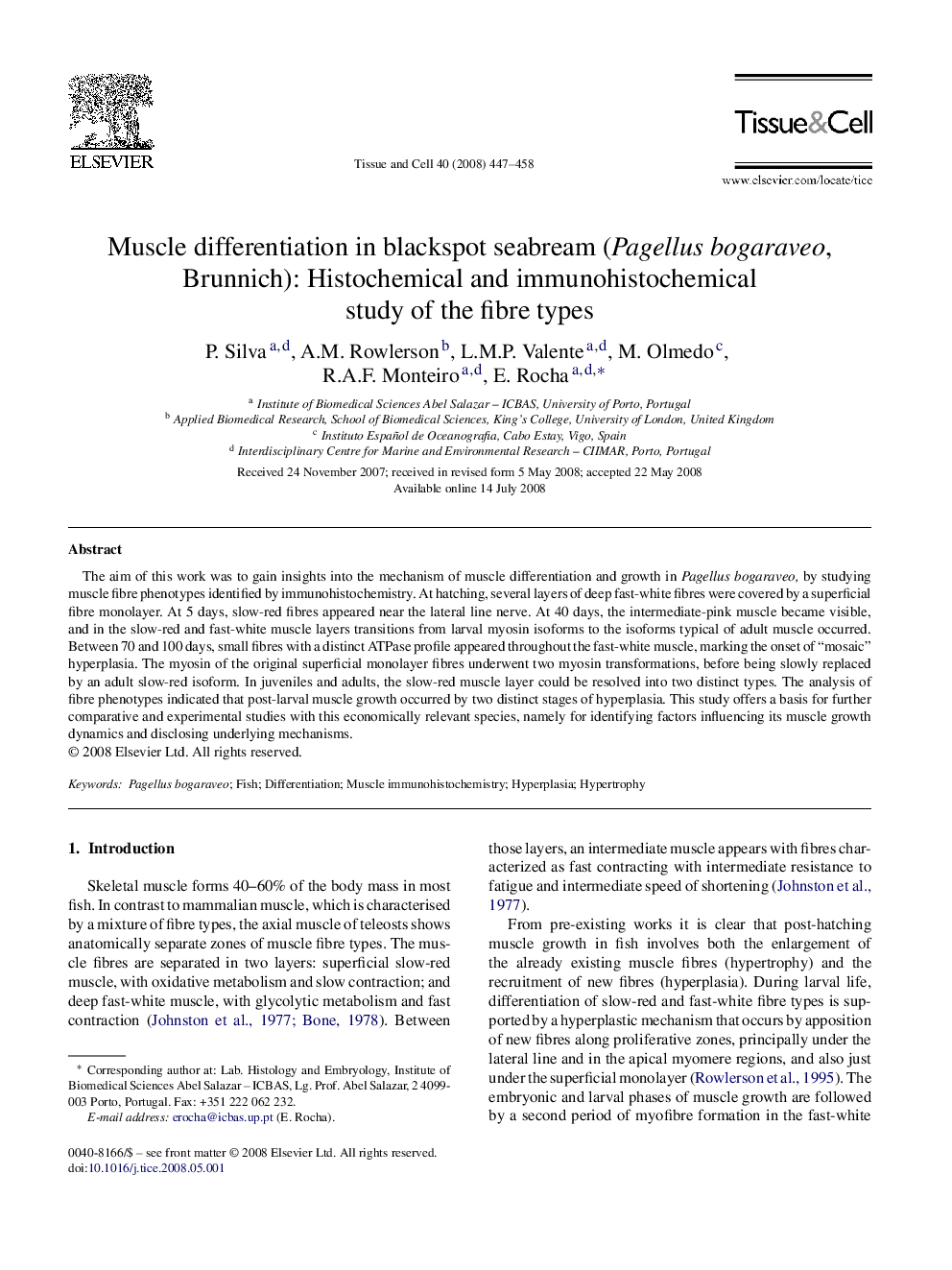| Article ID | Journal | Published Year | Pages | File Type |
|---|---|---|---|---|
| 2204011 | Tissue and Cell | 2008 | 12 Pages |
The aim of this work was to gain insights into the mechanism of muscle differentiation and growth in Pagellus bogaraveo, by studying muscle fibre phenotypes identified by immunohistochemistry. At hatching, several layers of deep fast-white fibres were covered by a superficial fibre monolayer. At 5 days, slow-red fibres appeared near the lateral line nerve. At 40 days, the intermediate-pink muscle became visible, and in the slow-red and fast-white muscle layers transitions from larval myosin isoforms to the isoforms typical of adult muscle occurred. Between 70 and 100 days, small fibres with a distinct ATPase profile appeared throughout the fast-white muscle, marking the onset of “mosaic” hyperplasia. The myosin of the original superficial monolayer fibres underwent two myosin transformations, before being slowly replaced by an adult slow-red isoform. In juveniles and adults, the slow-red muscle layer could be resolved into two distinct types. The analysis of fibre phenotypes indicated that post-larval muscle growth occurred by two distinct stages of hyperplasia. This study offers a basis for further comparative and experimental studies with this economically relevant species, namely for identifying factors influencing its muscle growth dynamics and disclosing underlying mechanisms.
